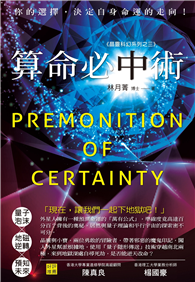The Chinese experience in Hawai’i has long been told as a story of inclusion and success. During the Cold War, the United States touted the Chinese community in Hawai’i as an example of racial harmony and American opportunity, claiming that all ethnic groups had the possibility to attain middle-class lives. Today, Honolulu’s Chinatown is not only a destination for tourism and consumption but also a celebration of Chinese accomplishments, memorializing past discrimination and present prominence within a framework of multiculturalism. This narrative, however, conceals many other histories and processes that played crucial roles in shaping Chinatown.
This book offers a critical account of the history of Chinese in Hawai’i from the mid-nineteenth century to the present in this context of U.S. empire, settler colonialism, and racialization. Nancy E. Riley foregrounds elements that are often left out of narratives of Chinese history in Hawai’i, particularly the place of Native Hawaiians, geopolitics and U.S. empire building, and the ongoing construction of race and whiteness. Tracing how Chinatown became a site of historical remembrance, she argues that it is also used to reinforce the ideology of neoliberal multiculturalism, which upholds racial hierarchy by lauding certain ethnic groups while excluding others. An insightful and in-depth analysis of the story of Honolulu’s Chinatown, this book offers new perspectives on the making of the racial landscape of Hawai’i and the United States more broadly.| FindBook |
有 1 項符合
Chinatown, Honolulu: Place, Race, and Empire的圖書 |
 |
Chinatown, Honolulu: Place, Race, and Empire 作者:Riley 出版社:Columbia University Press 出版日期:2024-06-11 語言:英文 規格:平裝 / 288頁 / 普通級/ 初版 |
| 圖書館借閱 |
| 國家圖書館 | 全國圖書書目資訊網 | 國立公共資訊圖書館 | 電子書服務平台 | MetaCat 跨館整合查詢 |
| 臺北市立圖書館 | 新北市立圖書館 | 基隆市公共圖書館 | 桃園市立圖書館 | 新竹縣公共圖書館 |
| 苗栗縣立圖書館 | 臺中市立圖書館 | 彰化縣公共圖書館 | 南投縣文化局 | 雲林縣公共圖書館 |
| 嘉義縣圖書館 | 臺南市立圖書館 | 高雄市立圖書館 | 屏東縣公共圖書館 | 宜蘭縣公共圖書館 |
| 花蓮縣文化局 | 臺東縣文化處 |
|
|
圖書介紹 - 資料來源:博客來 評分:
圖書名稱:Chinatown, Honolulu: Place, Race, and Empire
Choctaw Tales: Stories from the Firekeepers
Choctaw Tales: Stories from the Firekeepers
Choctaw Traditions: Stories of the Life and Customs of the Mississippi Choctaw
Risk-Informed Information Practice: Ways of Knowing in an Uncertain World
Risk-Informed Information Practice: Ways of Knowing in an Uncertain World
Engagement with Culture in Transformative Times: Mapping the Societal Drivers and Impacts of Cultural Understandings, Practices, Perceptions, and Valu
Crime, Its Cause and Treatment
Social Work and Social Welfare: An Invitation
Migration, Aging and Japan’s Sustainable Society
A Question of Answers: Volume I
Choctaw Tales: Stories from the Firekeepers
Choctaw Traditions: Stories of the Life and Customs of the Mississippi Choctaw
Risk-Informed Information Practice: Ways of Knowing in an Uncertain World
Risk-Informed Information Practice: Ways of Knowing in an Uncertain World
Engagement with Culture in Transformative Times: Mapping the Societal Drivers and Impacts of Cultural Understandings, Practices, Perceptions, and Valu
Crime, Its Cause and Treatment
Social Work and Social Welfare: An Invitation
Migration, Aging and Japan’s Sustainable Society
A Question of Answers: Volume I
|











